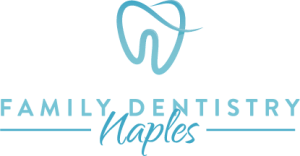The Art of Tooth Brushing: Techniques for a Healthier Smile
The Art of Tooth Brushing
Mastering the art of tooth brushing is not just a cornerstone of oral hygiene; it’s a ritual that can dictate the future of your dental health. Despite its significance, this daily practice often goes unexamined, with many individuals unaware of the potential enhancements to their technique. The choice of brush, the method of strokes, and even the timing can transform a mundane activity into an optimized regimen for oral care.
In this guide, we aim to dissect and reconstruct the way you approach tooth brushing, offering insights into methods and habits that contribute to a healthier smile and overall wellbeing. By elevating your understanding and application of these essential techniques, we can turn a routine task into an art form, promising a more effective clean and a brighter, healthier smile.


In this guide, we aim to dissect and reconstruct the way you approach tooth brushing, offering insights into methods and habits that contribute to a healthier smile and overall wellbeing. By elevating your understanding and application of these essential techniques, we can turn a routine task into an art form, promising a more effective clean and a brighter, healthier smile.
Choosing the Right Toothbrush
The battle between manual and electric toothbrushes has long been debated. While manual toothbrushes offer simplicity and control, electric variants are lauded for their efficiency and ease, especially for those with limited manual dexterity. The choice hinges on personal preference, comfort, and effectiveness in plaque removal.
Brushing Techniques for Optimal Cleaning
The technique can make all the difference in tooth brushing. Proper motions — gentle circular movements with a focus on the gum line — are paramount. Covering all surfaces, including the often-neglected inner aspects of the teeth, ensures comprehensive cleaning.
Toothpaste Types and Their Benefits
When it comes to toothpaste, options abound. Fluoridated toothpaste is traditional and backed by research for preventing decay, while natural formulas cater to those looking for holistic options. Whitening toothpastes can help with surface stains but may not be suitable for everyone.
Timing Your Brushing Right
The duration and frequency of brushing are pivotal. Dentists universally recommend brushing for two minutes, twice a day. This habit maximizes the effectiveness of fluoride and ensures all plaque is adequately disrupted.
The Integral Role of Flossing
Flossing is an indispensable complement to tooth brushing. It removes plaque and food particles from between the teeth and under the gum line, areas a toothbrush can’t reach. Daily flossing is recommended to prevent gum disease and cavities.
Reaching the Unreachable
For hard-to-reach areas, adjunctive tools such as interdental brushes or water flossers can be highly effective. These tools can access the interproximal areas between teeth and are especially beneficial for those with complex dental work.
Avoiding Common Brushing Errors
Common tooth brushing mistakes include using a hard-bristled brush, applying too much pressure, and neglecting certain areas of the mouth. Being aware of these can help prevent gum recession and enamel wear.
Brushing and Systemic Health: The Connection
There is a well-established link between oral hygiene and systemic health. Good tooth brushing habits can reduce the risk of secondary health issues related to poor oral health, such as heart disease and diabetes.
Special Considerations for Dental Work
Those with braces, implants, or other dental work must adapt their tooth brushing techniques to maintain these investments. Using specialized tools and being meticulous with hygiene routines is essential for preventing complications.
Instilling Good Habits in Children
Teaching children proper tooth brushing techniques early on sets the foundation for a lifetime of good oral health. Engaging them with fun brushes, flavored toothpaste, and brushing timers can make the routine enjoyable and habitual.
Conclusion
The art of tooth brushing is fundamental to dental health, yet it’s often ripe for improvement. By refining your techniques and understanding the principles behind effective brushing, you can elevate your oral care routine. Embrace these tips for a healthier smile and ensure that your daily tooth brushing ritual is as effective as it is invigorating, laying the groundwork for lasting dental wellness.
Choosing the Right Toothbrush
The battle between manual and electric toothbrushes has long been debated. While manual toothbrushes offer simplicity and control, electric variants are lauded for their efficiency and ease, especially for those with limited manual dexterity. The choice hinges on personal preference, comfort, and effectiveness in plaque removal.
Brushing Techniques for Optimal Cleaning
The technique can make all the difference in tooth brushing. Proper motions — gentle circular movements with a focus on the gum line — are paramount. Covering all surfaces, including the often-neglected inner aspects of the teeth, ensures comprehensive cleaning.
Toothpaste Types and Their Benefits
When it comes to toothpaste, options abound. Fluoridated toothpaste is traditional and backed by research for preventing decay, while natural formulas cater to those looking for holistic options. Whitening toothpastes can help with surface stains but may not be suitable for everyone.
Timing Your Brushing Right
The duration and frequency of brushing are pivotal. Dentists universally recommend brushing for two minutes, twice a day. This habit maximizes the effectiveness of fluoride and ensures all plaque is adequately disrupted.
The Integral Role of Flossing
Flossing is an indispensable complement to tooth brushing. It removes plaque and food particles from between the teeth and under the gum line, areas a toothbrush can’t reach. Daily flossing is recommended to prevent gum disease and cavities.
Reaching the Unreachable
For hard-to-reach areas, adjunctive tools such as interdental brushes or water flossers can be highly effective. These tools can access the interproximal areas between teeth and are especially beneficial for those with complex dental work.
Avoiding Common Brushing Errors
Common tooth brushing mistakes include using a hard-bristled brush, applying too much pressure, and neglecting certain areas of the mouth. Being aware of these can help prevent gum recession and enamel wear.
Brushing and Systemic Health: The Connection
There is a well-established link between oral hygiene and systemic health. Good tooth brushing habits can reduce the risk of secondary health issues related to poor oral health, such as heart disease and diabetes.
Special Considerations for Dental Work
Those with braces, implants, or other dental work must adapt their tooth brushing techniques to maintain these investments. Using specialized tools and being meticulous with hygiene routines is essential for preventing complications.
Instilling Good Habits in Children
Teaching children proper tooth brushing techniques early on sets the foundation for a lifetime of good oral health. Engaging them with fun brushes, flavored toothpaste, and brushing timers can make the routine enjoyable and habitual.
Conclusion
The art of tooth brushing is fundamental to dental health, yet it’s often ripe for improvement. By refining your techniques and understanding the principles behind effective brushing, you can elevate your oral care routine. Embrace these tips for a healthier smile and ensure that your daily tooth brushing ritual is as effective as it is invigorating, laying the groundwork for lasting dental wellness.
